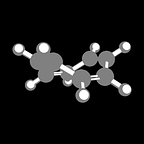The Chemistry Mentalist
Chances are, you’re not like me: you cringe when someone says the word “chemistry.” Your memory of it vaguely harkens back to an undergrad class whose knowledge you flushed once you finished the final. That’s okay — my goal for this series is to change that paradigm, make it understandable to all, and provide some entertainment.
Give me a second, and the title will make sense, I promise.
With the confusion of atomic weights finally put to rest, chemists could now bitch and complain about other facets of the discipline. One of the biggest controversies at the time (around 1860) was how to group the elements. Lavoisier made his attempt at grouping back in the late 1700s when only 30 or so elements were known (Lavoisier also included compounds and forms of energy in his groupings). Since then, the list of known elements had grown to approximately 60, which had spurred others to create their own groupings as well. Ultimately, chemists were searching for commonalities in the elements and trying to find patterns in how they behaved or reacted. Patterns help to build predictions, and reaction predictions are essentially the backbone of chemistry.
Previously, I talked about chemistry’s most famous number — now, I’m going to discuss chemistry’s most famous table: the periodic table of elements. We can’t talk about the periodic table without talking about the chemist with the best beard ever, Dmitri Mendeleev.
